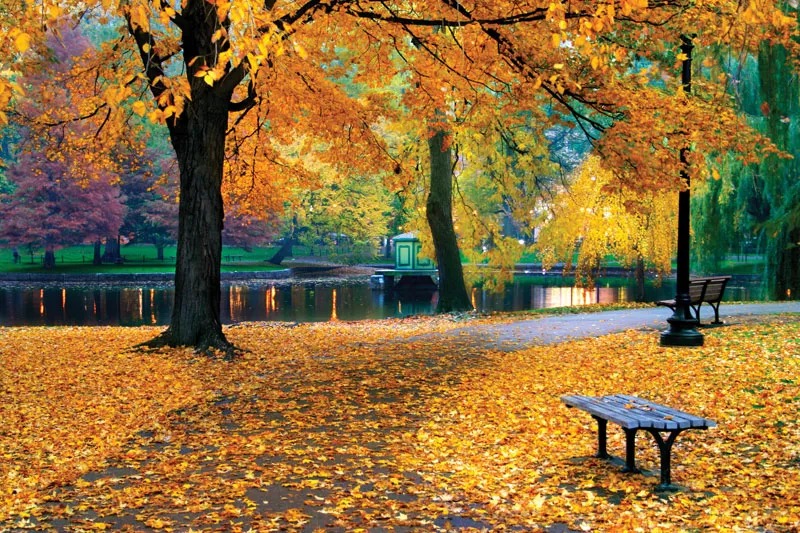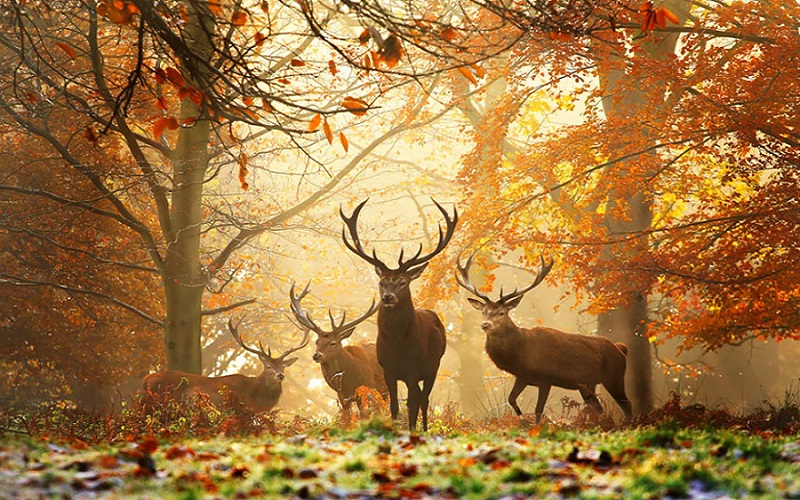The inclination of the Earth rotation and the planet pull of the sun cause the climates to cycle. Summer is experienced in that quarter when the axis points toward the sunshine. Winter occurs in the hemisphere slanted away from the light. The autumn season is between summer and winter. The axis is along the planet course, parallel to the star when it has traveled a quarter across the solar. Autumn is the cooling off weather, positioned between the scorching summer and the freezing winter. Night falls earlier, surface temperature fall, and most cultivation slows down. Animals begin to gather stores or migrate to hotter areas. It is for the food shortage in the cold season.
When is the autumn season?
Autumn begins when the world shines to cross the celestial equator at the junction of the ecliptic and the celestial equator. At midday, the sun is straight overhead at the horizon. There are some interesting facts about it. These times are known as equinoxes, and the lengths of day and night are nearly equal at these times. The equinox marks the start of astronomical autumn, which lasts until the beginning of winter. It occurs in the Northern Hemisphere from roughly September 23 to around December 21, though it fluctuates every year. The period in the Southern Hemisphere lasts from March 20 to June 21.
Falling temperatures in the autumn season

Fall brings a chilly breeze. The magnitude of the change is by the location on Earth. Climate near the equator is typically consistent throughout the year, although temperatures farther north or south vary significantly. It is due to the fact that the equator receives regular amounts of sunlight. Harvest is the term for the transitional period between summer and winter. Fall, a Latin word, first arrived in English in the late 14th century and rapidly surpassed harvest in popularity. Fall became popular in the 17th century, definitely a lyrical companion to spring.
Autumn falls Phenomena
It is known for its rainy days, gloomy and heavy clouds in the sky on some days and strong winds. Various species of mushrooms begin to develop at this time of year. They come in colors and shapes but are cautious because some of them are deadly to touch. Murmurations of starlings are another feature that only happens in autumn. They form large groups of thousands or even millions of birds and swing around. It is worth seeing. In addition, the autumn season causes birds to migrate to warmer climates so everyone can observe a bird flying in the air.
Autumn season flora
When the autumn season arrives, almost all trees begin to change color. Look at these gold, red, yellow, and other colors. So get outside and enjoy this wonderful moment! Autumn vibes can be everywhere. As the weather gets cooler, so does the earth temperature, which is why plants stop producing food. Crocus is the flower to plant in the autumn. This modest but lovely flower will brighten your day with its brilliant colors. Autumn, as you may know, is a harvest season. Many farmers begin to gather their harvests, including various fruits and vegetables. It is, however, a moment when you can plant something like baby spinach, snow peas, radishes, and garlic.
Autumn season fauna

When the weather gets cooler, animals outside prepare for the winter months. Creatures prepare for the winter in a variety of ways. Some species develop thick winter coats! Similarly, we purchase warm clothing for ourselves. Rabbits have thicker fur, which allows them to withstand the cold. Even cats and dogs do it; be aware if you have a domestic pet. Other creatures go into a deep slumber known as hibernation. Their body temperature drops, allowing them to conserve energy. Bears, chipmunks, and skunks all live in this manner. Finding a shelter is also an excellent option for animals to survive the winter. So in the fall, they look for home inside the trees, under the leaves.
Autumns season traditions
It is an excellent time to commemorate any occasion, custom, or holiday. During this time, we observe a number of events or rituals. Dia de Muertos, Chuseok, Thanksgiving, Dussehra, and Diwali are just a few examples.
Characteristics and facts of the autumn season
There are specific signs and symptoms of this season that reminds me of it. They are the following:
Warmth and light periods
When we look at the first day of fall, we can see that it starts on the equinox. The autumnal transition is distinguished by the same length of time as there is at night. There are 12 hours of light and 12 hours of sleep. Because the sun is with the core of the Universe, this happens. The mornings are shorter, and the nights are from the day the equinox finishes. In other words, the number of hours of darkness increases while the number of hours of light decreases.
Red tones and dropping leaves
We know fewer minerals in the winter; therefore, the plant will need all nourishment. In terms of hues, one can observe how the autumn color scheme is quite unique. Ocher, yellow, red, brown, and purple are some colors. The color scheme blends in with the majority of the world sceneries. With their distinct coloration, the leaves of the trees start to show tints of yellow and orange.
Autumn harvests and celebrations

Corn and sunflower are two of the most well-known crops during this year. When we look at the celebrations part, we can see that it is a period observed in various months depending on the area. The Moon Festival, celebrated by the Chinese, is one of the most well-known holidays. In this case, they are thankful for the living crop. There is also Thanksgiving, which is related to harvests. It is a festival held in the latter month of November to honor the good fortune of each year, which is by a banquet including stuffed chicken.
Final word
The Autumn season experience more emotions than a volcano due to multiple climatic, physiological, and morphological changes. It is said to be the end of the growing season. Autumn is the harvesting period. Usher in a time of festivity for many farming civilizations. It is when we harvest crops.

